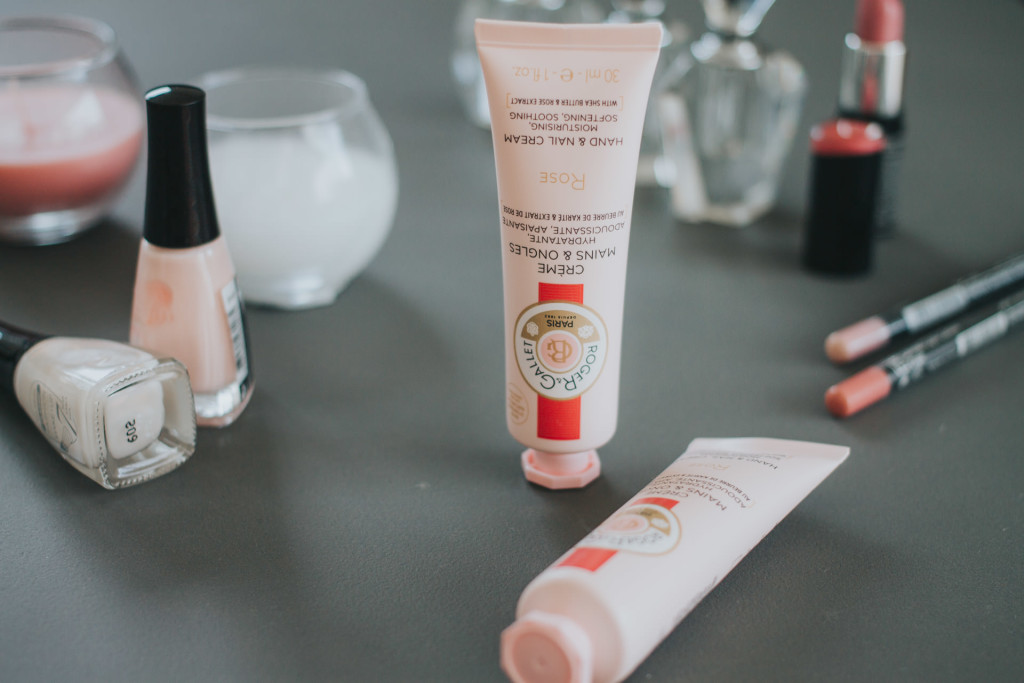
Beauty brands are eager to display the most sparkly, convincing copy on their websites, labels, packaging and other marketing/promotional materials. After all, copy can make or break a sale and ultimately, make or break a brand.
But when you’re creating (and, more importantly, printing and publishing) copy, there’s one thing you need to pay attention to: FDA compliancy. In other words, are your written descriptions legal?
Unless your product is approved as a drug, you can’t make juicy claims that your facial serum will “stimulate collagen production” or your moisturizer will “heal acne.” Sure, that might make your product fly off shelves, but there might not be a product to sell at all if you’re caught.
Here’s a basic primer on how to write without breaking the law.
* The contents of this article are for informational purposes only. This article is not intended to replace professional legal advice. Always seek the advice of your legal counsel with any questions.
How Is a Cosmetic Defined?
In short, cosmetics are products that help you look better. This includes moisturizers, lipsticks and nail polish.
Here it is straight from the horse’s mouth:
“The Federal Food, Drug, and Cosmetic Act (FD&C Act) defines cosmetics by their intended use, as ‘articles intended to be rubbed, poured, sprinkled, or sprayed on, introduced into, or otherwise applied to the human body…for cleansing, beautifying, promoting attractiveness, or altering the appearance.’”
How Is a Drug Defined?
In short, drugs are products that aim to heal and/or change the structure of skin.
Writes the FDA,
“The FD&C Act defines drugs, in part, by their intended use, as ‘articles intended for use in the diagnosis, cure, mitigation, treatment, or prevention of disease’ and “articles (other than food) intended to affect the structure or any function of the body of man or other animals.”
Before drugs are marketed, they must be approved by the FDA.
What Does This Mean for Beauty Copywriting?
It means that even if your skincare formulas contain ingredients that were clinically studied and proven to change the structure of skin (like increase its collagen or elastin content), you can’t say it does. At least not without some word wizardy.
Common Statements and Words to Avoid
Avoid the following claims that a product will…
- reduce/decrease/eliminate inflammation
- regenerate cells
- prevent muscle contractions
- boost activity of cellular response
- bestow similar results as Botox, fillers or other types of professional procedures
- treat medical conditions, such as acne, eczema, rosacea and psoriasis
For the most part, be wary of or completely avoid the following words:
- Treats
- Increases collagen
- Revives cells
- Regenerates skin
- Increases cell turnover
- Stimulates circulation
- Anti-inflammatory
- Antimicrobial
- Anti-viral
- Antibacterial
- Antiseptic
- Supports cell communication
- Heals
- Acne
- Astringent
- Changes the size of pores
- Hormone balancing
- Repair free radical damage
- Stimulates collagen production
- Stimulates hair growth
- Repairs sun damaged skin
Real-Life Examples of Drug Claims
To get a better sense of what doesn’t fly, below are phrases taken from actual warning letters issued by the FDA to beauty companies. Although your legal team will evaluate and make suggestions, it’s always a good idea to retain a basic understanding yourself.
- “[A]dvanced collagen boosters and botox alternatives that actually work”
- “[H]elps breakdown fat deposits…”
- “[R]epairs damaged skin”
- “[W]ill protect it from inflammation… and inhibit bacterial reactions”
- “[A]n emergency solution for post laser, peeling or injections”
- “helps fade dark circles by stimulating microcirculation”
- “reduces puffiness by draining excess fluids”
- “helps reduce under eye bags by breaking down abnormal fatty deposits”
- “[A]ntibacterial action”
- “[H]elps erase and repair the ravages of sun damage”
- “BHA penetrates skin to… neutraliz[e] bacteria.”
- “[A]ge-repairing antioxidant that encourages . . . collagen production”
- “[A]n age-repairing antioxidant that promotes the regeneration of damaged . . . skin”
- “speeds healing and increases surface circulation…”
- “helps control acne by reducing inflammation and bacteria production.”
- “Retinol reduces that red inflamed appearance associated with rosacea and acne.”
- “[P]romotes the regeneration of damaged skin… helps heal wounds …stimulates white blood cells…enhances the immune and lymphatic system”
- “[C]alms inflammation and redness”
- “[P]roven to stimulate collagen and elastin production, assists natural skin repair that helps heal scar tissue”
- “[H]elps correct the appearance of rosacea”
- “[H]eals and prevents acne production … allowing foom [sic] for new cell growth.”
- “[M]ildly antibiotic …”
- “Tea Tree – Anitseptic, antifungal and antibacterial”
- “Tocopherol (Vitamin E) is an age-repairing antioxidant that promotes the regeneration of damaged …skin.”
- “Copper Peptide is a…powerful skin regeneration agent that effectively treats acne…while calming irritated and inflamed skin. Copper also stimulates collagen and elastin formation.”
- “[A]ssists with cell absorption”
- “Now even more tightening, lifting…”
- “With TGF-b (transforming growth factor-beta) to stimulate fibroblast cell growth, in the presence of PDGF (platelet derived growth factor) and …it increases collagen, elastin, and other matrix protein production…”
- “Camellia Sinesis Extract [an ingredient in your product]…is anti-bacterial and … anti-cancer.”
- “Tetrahexyldecyl Ascorbate [an ingredient in your product] – Vitamin C oily(an antioxidant) increases collagen levels, reduce [sic] melanin production… and repair the effects of UV exposure…”
- “Acetyl Hexapeptide-8 [an ingredient in your product] – Argireline® …keeps down the release of a neural signal protein (catecholamine) and thus, prevents the muscle contraction involved in facial expressions.”
- “Leuphasyl® (Pentapeptide-18) [an ingredient in your product] -…couples to the enkephali receptor, outside of nerve cells which in turn close calcium channels and consequently inhibiting [sic] acetylcholine release and attenuate muscle contraction and reduce expression line wrinkles.”
How to Write Beauty Product Descriptions Legally
The good news is there are ways to convey the benefits of your products without making drug claims. With some clever wording, you can alter your statements so they become “cosmetic,” which is totally kosher.
You’ll find these words are commonly used to get around the issue:
- Appearance
- Look
- Visible/visibly
- Effects
For example:
“Our Anti-Aging Moisturizer contains retinol, which stimulates collagen production and repairs skin damage.” (UNACCEPTABLE)
becomes
“Our Anti-Aging Moisturizer contains retinol, which drastically improves the appearance of collagen-depleted skin and enhances the visible effects of environmental damage.” (ACCEPTABLE)
Also, cleanse and exfoliate are just fine.
What about blog writing?
You might be wondering: If I write about ingredients in a blog post without mentioning the product at all, then can I make structure and function claims? In my experience, this has been a gray area for a long time. I’ve heard varying things from different regulatory experts, but most of them strongly recommend avoiding this practice altogether. Even if you’re equipped with a legitimate clinical study published in a reputable medical journal, don’t make drug claims.
Err on the side of caution.
How to Guarantee Your Written Materials Are Compliant
The only way to truly stand on safe ground is to have a legal/regulatory professional review all copy before you make it public — even if you have a copywriter. A professional writer will be wary of making claims, but legal should have ultimately say. After all, words are just as subjective as they are objective–and interpretation can vary wildly.
Ultimately, a good writer will help you create the most dazzling copy despite the limits. And you’ll likely spend less on hourly legal fees. That’s always a plus, right?
Sources:
https://www.fda.gov/Cosmetics/GuidanceRegulation/LawsRegulations/ucm074201.htm
https://www.fda.gov/ForConsumers/ConsumerUpdates/ucm439270.htm
http://www.fda.gov/ICECI/EnforcementActions/WarningLetters/2015/ucm476560.htm
http://www.fda.gov/ICECI/EnforcementActions/WarningLetters/ucm436692.htm
http://www.cosmeticsdesign.com/Regulation-Safety/FDA-cracking-down-on-improper-cosmetics-claims?nocount
http://www.fda.gov/ICECI/EnforcementActions/WarningLetters/2014/ucm424920.htm

Comments are closed, but trackbacks and pingbacks are open.